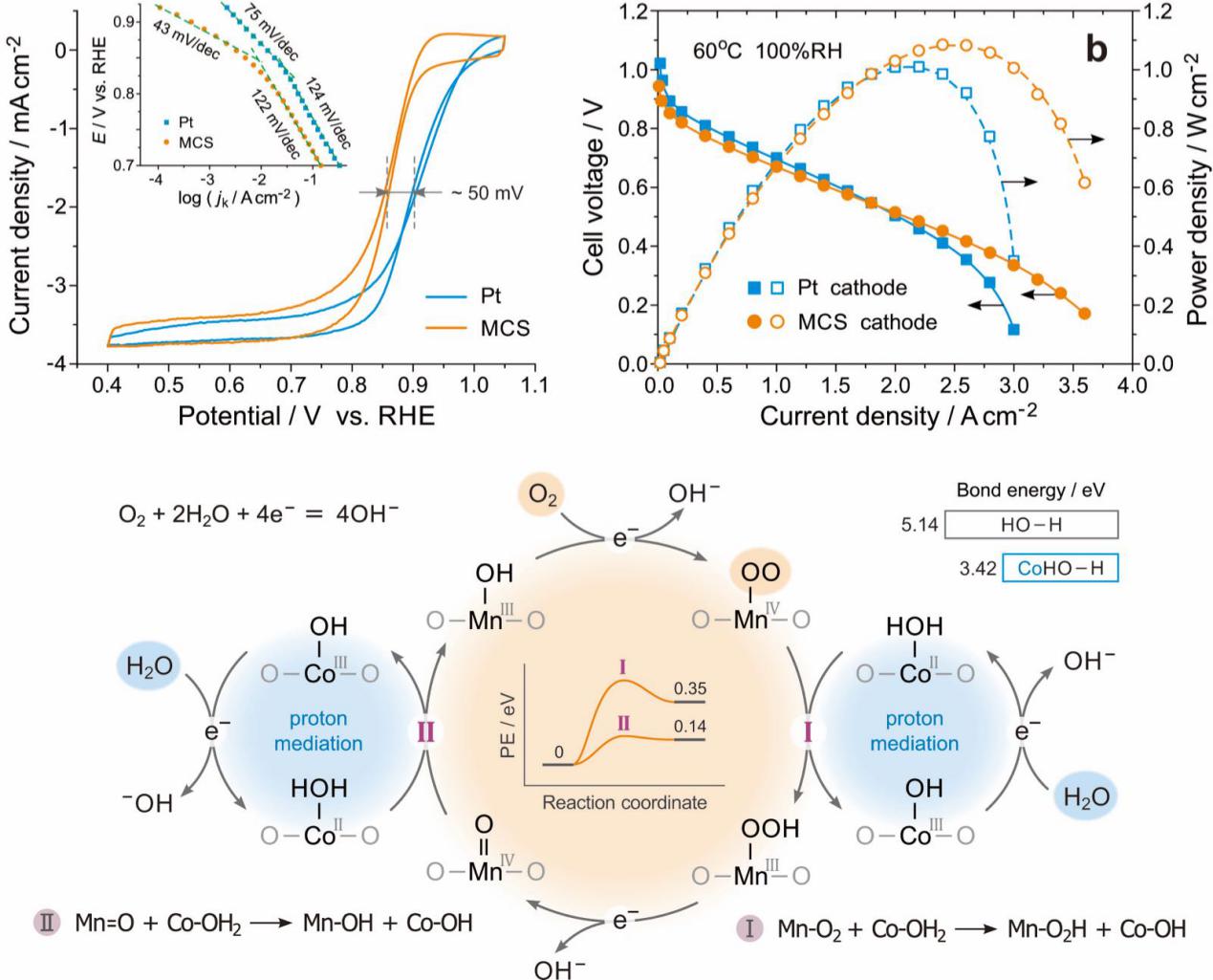The scientific online journal Nature Communications reported the recent alkaline polymer electrolyte fuel cell (APEFC) research results of Lin Zhuang and Li Xiao’s team from the College of Chemical and Molecular Science.
The title of this paper is "Synergistic Mn-Co catalyst outperforms Pt on high-rate oxygen reduction for alkaline polymer electrolyte fuel cell". The first author, Ying Wang, is a doctoral student of Professor Lin Zhuang.
APEFC is a new type of fuel cell. The advantage is that it is able to use non-noble metal catalysts, which is expected to significantly reduce the cost, so as to solve the problem that the key fuel cell materials for vehicles in our country depend on imports. Three years ago, the team studied MnCo spinel (MCS) catalyst and found that although the catalytic activity of MCS for oxygen reduction reaction (ORR) in solution was lower than that of Pt catalyst, its performance in APEFC was not inferior to the latter, and even better than that of Pt electrodes at low humidity. Over the next year, the team combined a variety of spectroscopy and computational methods to fully reveal the underlying mechanism of this novel discovery. In APEFC cathode, water molecule participates in ORR but does not exist in large quantities, so the activation of water molecule becomes a key factor. In MCS catalysts, Mn and Co play different roles. Mn activates O2 while Co activates H2O, and synergistically catalyzes electrode reactions with proton transfer. This mechanism is absent from the relatively hydrophobic Pt surface.
This discovery not only reveals an important principle of fuel cell catalyst design, but also makes APEFC non-noble metal cathode performance reach a high level. The power density of a single cell reaches 1.1 W/cm2 at 60oC. It can be predicted that this research progress will strongly promote the practical process of APEFC. In this field, this team reported the first APEFC prototype of non-noble metal catalyst in the Journal of the National Academy of Sciences in 2008, and the research on materials and catalysis has made continuous progress. The alkaline poly-electrolyte, a key material, has begun to commercialize.

This work was collaborated with Professor Héctor D. Abrunã of Cornell University, Professor Jianbo Wang of Wuhan University (School of Physical Science and Technology), Professor Bingzhao Huang of Taiwan University of Science and Technology et. al. in synchrotron radiation source spectroscopy and spherical aberration correction TEM testing.
Paper Link: https://www.nature.com/articles/s41467-019-09503-4.
